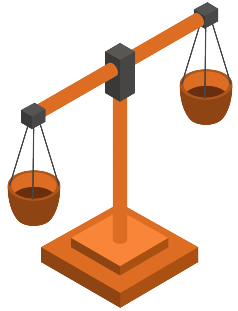California Voir Dire Rules
A guide to Voir Dire in Civil cases in California
Introduction
Voir Dire is one of the most important parts of any trial. In order to competently represent your client, it is important to understand the statutes that govern the Voir Dire Process.
Important Rules
The Judge May Not Impose Specific Unreasonable or Arbitrary Time Limits– “The trial judge shall not impose specific unreasonable or arbitrary time limits or establish an inflexible time limit policy for voir dire.” [CCP 222.5(b)(2)]
Counsel are Not Allowed to use Questions to Precondition or Indoctrinate – For purposes of this section, an ‘improper question’ is any question that, as its dominant purpose, attempts to precondition the prospective jurors to a particular result, indoctrinate the jury, or question the prospective jurors concerning the pleadings or the applicable law. [CCP 222.5(b)(3)]
Some Scenarios Require Additional Time – Supplemental time “shall be permitted” for certain circumstances including (1) Individual responses or conduct of jurors that may evince attitudes inconsistent with suitability to serve as a fair and impartial juror in the particular case.;(2) Composition of the jury panel; (3) An unusual number of for cause challenges. [CCP 222.5(c)(2)(A)]
Mini-Openings are Mandatory if Requested – “Upon the request of a party, the trial judge shall allow a brief opening statement by counsel for each party prior to the commencement of the oral questioning phase of the voir dire process.” [CCP 222.5(d)]
Juror Questionnaires are Allowed Unless There is a Good Reason to Disallow – “A trial judge shall not arbitrarily or unreasonably refuse to submit reasonable written questionnaires, the contents of which are determined by the court in its sound discretion, when requested by counsel. If a questionnaire is utilized, the parties shall be given reasonable time to evaluate the responses to the questionnaires before oral questioning commences.” [CCP 222.5(f)]
Defendant Makes Cause Challenges First – All challenges to an individual juror, except a peremptory challenge, shall be taken, first by the defendants, and then by the people or plaintiffs. [CCP 226(d)]
Each Side Gets Six Peremptory Challenges (Eight in Multi-Party Cases) – “In civil cases, each party shall be entitled to six peremptory challenges. If there are more than two parties, the court shall, for the purpose of allotting peremptory challenges, divide the parties into two or more sides according to their respective interests in the issues. Each side shall be entitled to eight peremptory challenges. If there are several parties on a side, the court shall divide the challenges among them as nearly equally as possible. If there are more than two sides, the court shall grant such additional peremptory challenges to a side as the interests of justice may require, provided that the peremptory challenges of one side shall not exceed the aggregate number of peremptory challenges of all other sides. If any party on a side does not use his or her full share of peremptory challenges, the unused challenges may be used by the other party or parties on the same side.” [CCP 231(c)]
Plaintiff Makes Peremptory Challenges First, and Then Alternates with Defense – “Peremptory challenges shall be taken or passed by the sides alternately, commencing with the plaintiff or people, and each party shall be entitled to have the panel full before exercising any peremptory challenge. When each side passes consecutively, the jury shall then be sworn, unless the court, for good cause, shall otherwise order. The number of peremptory challenges remaining with a side shall not be diminished by any passing of a peremptory challenge.” [CCP 231(d)]
Three Ways to Disqualify a Juror for Cause
Jurors May be Excluded for Cause for (a) General Disqualification; (b) Actual Bias; or (c) Implied Bias – “The challenges of either party for cause need not all be taken at once, but they may be taken separately, in the following order, including in each challenge all the causes of challenge belonging to the same class and type:(a) To the panel. (b) To an individual juror, for a general disqualification. (c) To an individual juror, for an implied bias. (d) To an individual juror, for an actual bias. ” [CCP 222.5(c)(2)(A)]
1. General Disqualification
General Disqualification – “Challenges for general disqualification may be taken on one or both of the following grounds, and for no other: (a) A want of any of the qualifications prescribed by this code to render a person competent as a juror. (b) The existence of any incapacity which satisfies the court that the challenged person is incapable of performing the duties of a juror in the particular action without prejudice to the substantial rights of the challenging party.” [CCP 229]
2. Implied Bias
Implied Bias – A juror may be challenged for implied bias (a) if they are related to a party; (b) if they have a special relationship with a party; (c) if they were involved in prior aspects of the litigation; (d) if the juror has an interest in the outcome of the case; (e) if the juror has an unqualified belief/opinion based upon knowledge of the material facts of the case; (f) if the juror has enmity or bias against a party; (g) the Juror is a party; (h) the juror is a conscientious objector in a death penalty case. [CCP 229]
Relation to a Party – “Consanguinity or affinity within the fourth degree to any party, to an officer of a corporation which is a party, or to any alleged witness or victim in the case at bar.” [CCP 229(a)]
Special Relationship to a Party – “Standing in the relation of, or being the parent, spouse, or child of one who stands in the relation of, guardian and ward, conservator and conservatee, master and servant, employer and clerk, landlord and tenant, principal and agent, or debtor and creditor, to either party or to an officer of a corporation which is a party, or being a member of the family of either party; or a partner in business with either party; or surety on any bond or obligation for either party, or being the holder of bonds or shares of capital stock of a corporation which is a party; or having stood within one year previous to the filing of the complaint in the action in the relation of attorney and client with either party or with the attorney for either party. A depositor of a bank or a holder of a savings account in a savings and loan association shall not be deemed a creditor of that bank or savings and loan association for the purpose of this paragraph solely by reason of his or her being a depositor or account holder.” [CCP 229(b)]
Involved in Prior Aspects of the Litigation – “Having served as a trial or grand juror or on a jury of inquest in a civil or criminal action or been a witness on a previous or pending trial between the same parties, or involving the same specific offense or cause of action; or having served as a trial or grand juror or on a jury within one year previously in any criminal or civil action or proceeding in which either party was the plaintiff or defendant or in a criminal action where either party was the defendant.” [CCP 229(c)]
Interest in the Outcome of the case – “Interest on the part of the juror in the event of the action, or in the main question involved in the action, except his or her interest as a member or citizen or taxpayer of a county, city and county, incorporated city or town, or other political subdivision of a county, or municipal water district.” [CCP 229(d)]
Unqualified beleif/opinion – “Having an unqualified opinion or belief as to the merits of the action founded upon knowledge of its material facts or of some of them.” [CCP 229(e)]
Enmity or Bias – “The existence of a state of mind in the juror evincing enmity against, or bias towards, either party.” [CCP 229(f)]
Party to the Action – “That the juror is party to an action pending in the court for which he or she is drawn and which action is set for trial before the panel of which the juror is a member.” [CCP 229(g)]
Conscientious Objection – “If the offense charged is punishable with death, the entertaining of such conscientious opinions as would preclude the juror finding the defendant guilty; in which case the juror may neither be permitted nor compelled to serve.” [CCP 229(g)]
3. Actual Bias
Actual Bias is Requires Entire Impartiality – Actual bias is defined as “the existence of a state of mind on the part of the juror in reference to the case, or to any of the parties, which will prevent the juror from acting with entire impartiality, and without prejudice to the substantial rights of any party.” [CCP 225(b)(1)(C)]
Examples of Actual Bias:
In People v. Thomas (1990) 218 Cal.App.3d 1477, 1482, the Court of Appeal upheld the mid-deliberations dismissal of a juror who believed, “based upon personal experience, that police officers in Los Angeles generally lie.”
Lying on a jury questionnaire can show bias. In Nissan Motor Acceptance Cases v. Superior Automotive Group, L.L.C. (2021) 63 Cal.App.5th 793, a juror answered “No” to questions on the juror questionnaire asking whether “you, any members of your family, or close friends” had filed a lawsuit or been sued. In actuality, she was a defendant in three unlawful detainer actions, a defendant in two personal injury lawsuits from 1985 and 2000 involving auto accidents, and was an officer, director, and agent for service of process for a corporation sued by the State of Florida for securities violations. The court found it likely the juror’s nondisclosures were intentional and therefore revealed Woodside had a state of mind that prevented her from acting as an impartial juror.
Challenges for actual bias “should be sustained when the juror’s views would `prevent or substantially impair’ the performance of his or her duties as a juror in accordance with the instructions and oath.” (People v. Mincey (1992) 2 Cal.4th 408, 456.)
In the trial court, a prospective juror’s actual bias need not be proven with “unmistakable clarity”; it is sufficient that the trial judge is “left with a definite impression” that the prospective juror would be unable to decide the case before the juror impartially. (See People v. Rodrigues (1994) 8 Cal.4th 1060, 1146-1147.)

This page is not legal advice, and there is no guarantee that this information is up to date. If you need legal advice, you should contact a lawyer.
This page was created by and (c) Noah Schwinghamer, a Sacramento Injury Lawyer. If you would like to copy this information, please request permission. Please feel free to link to this page.
